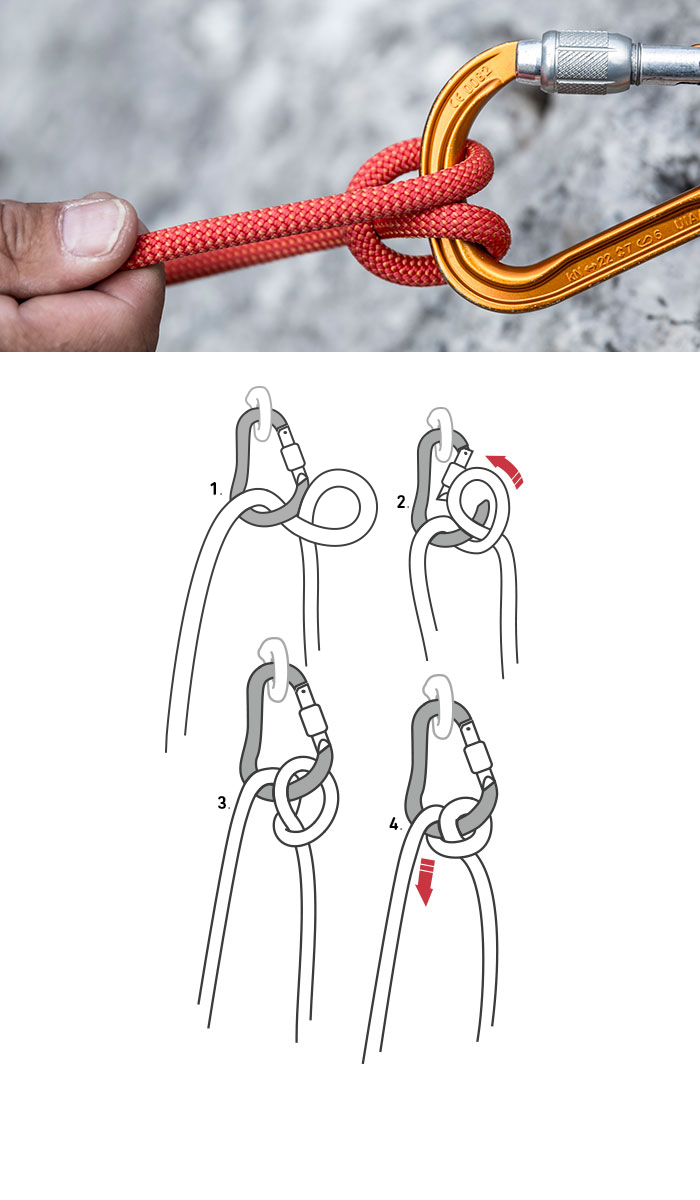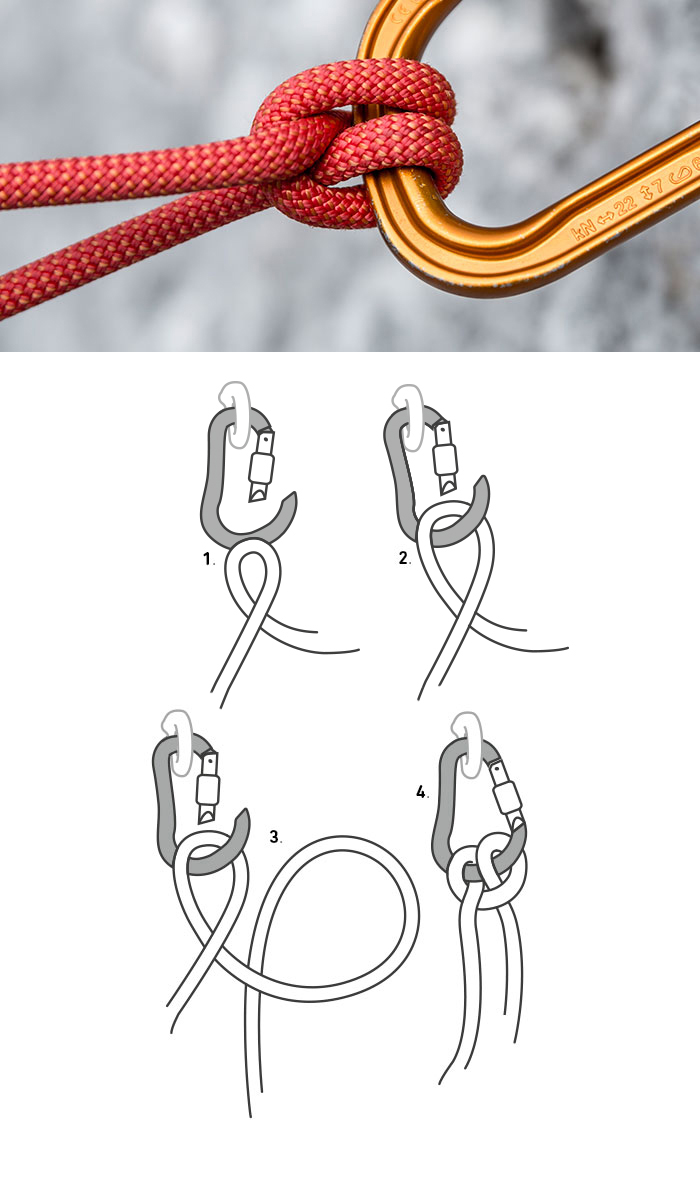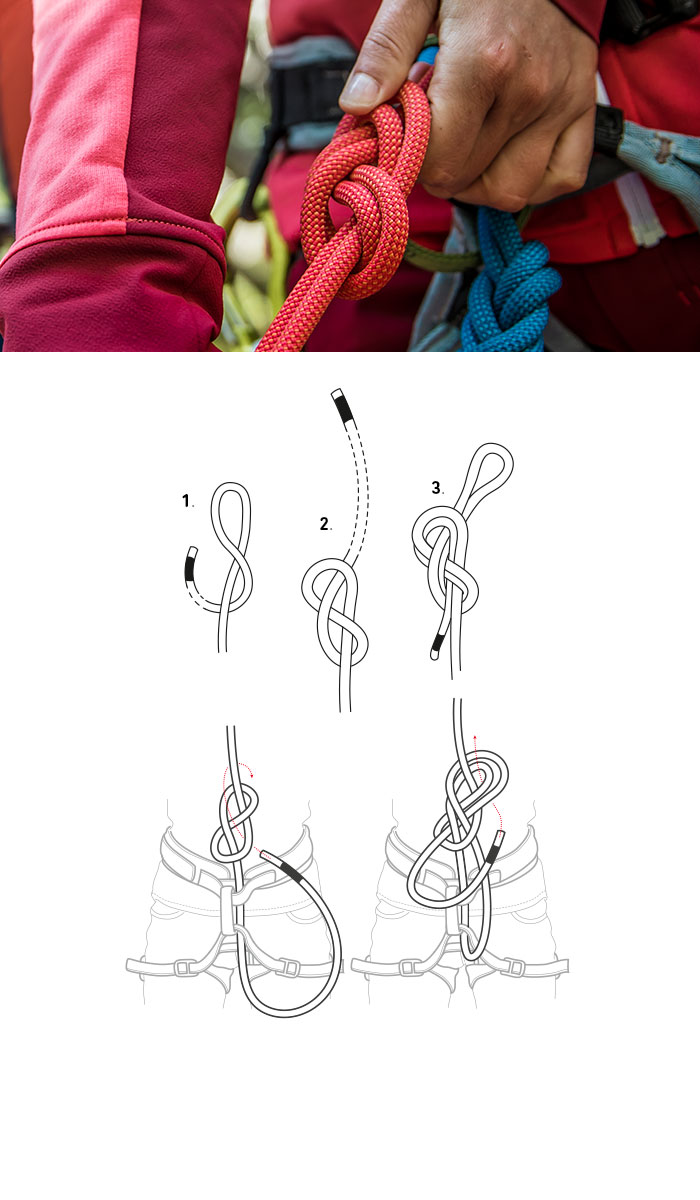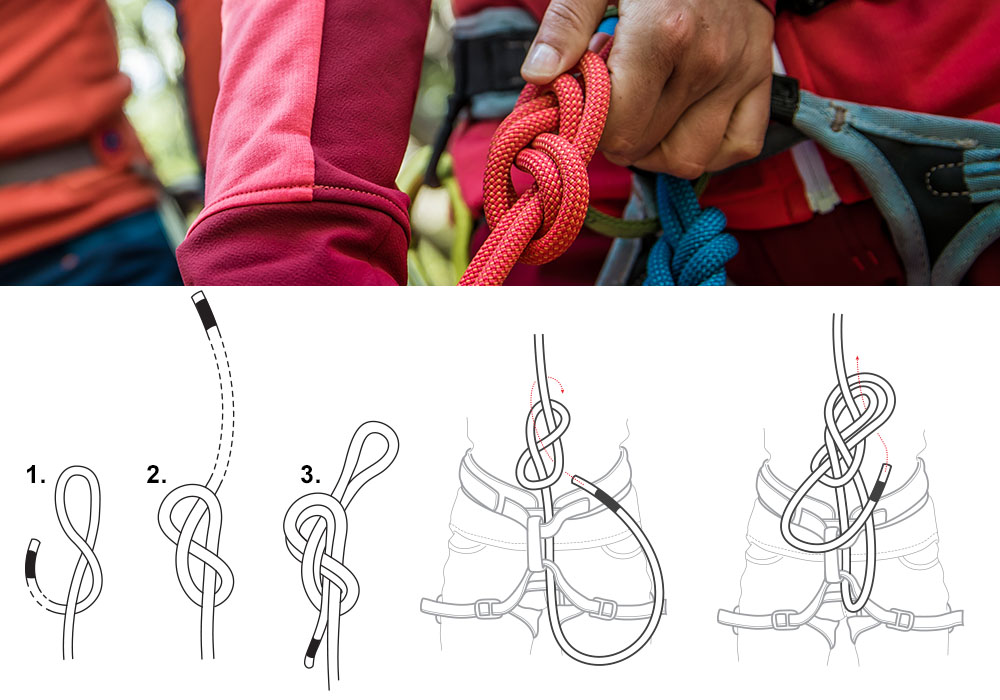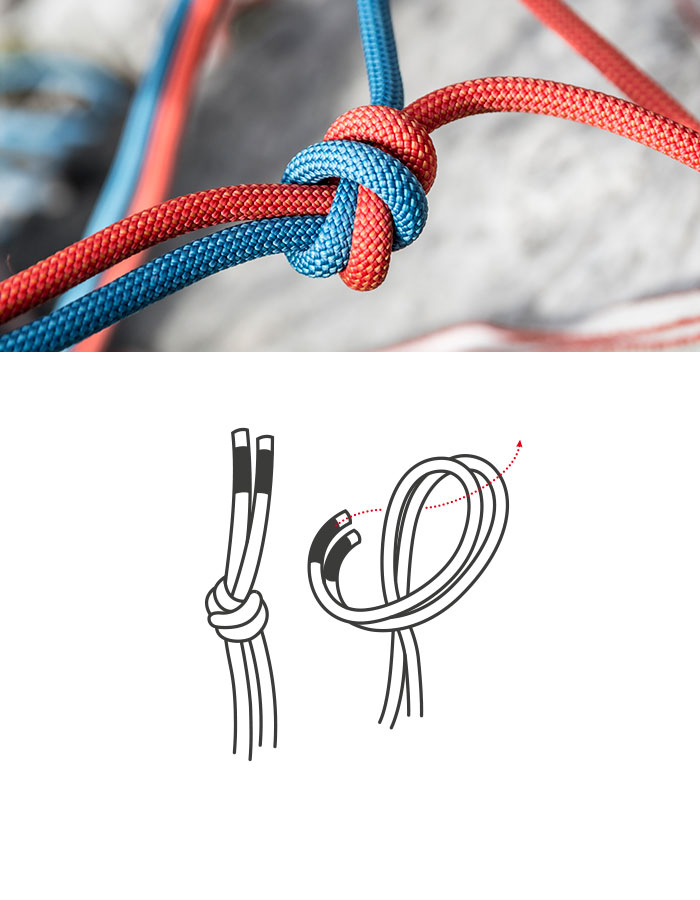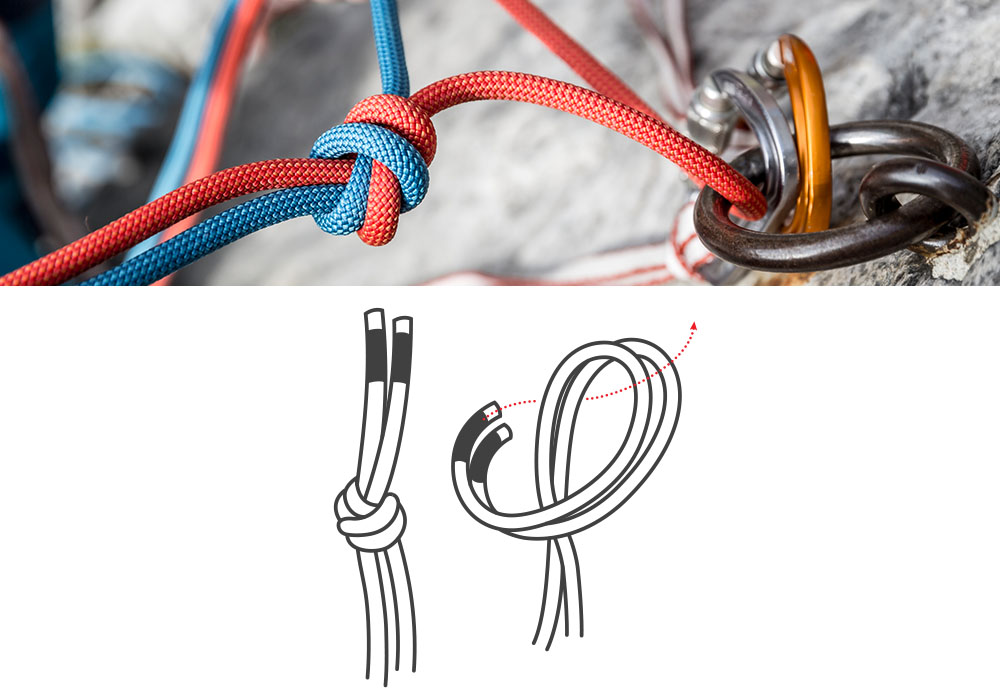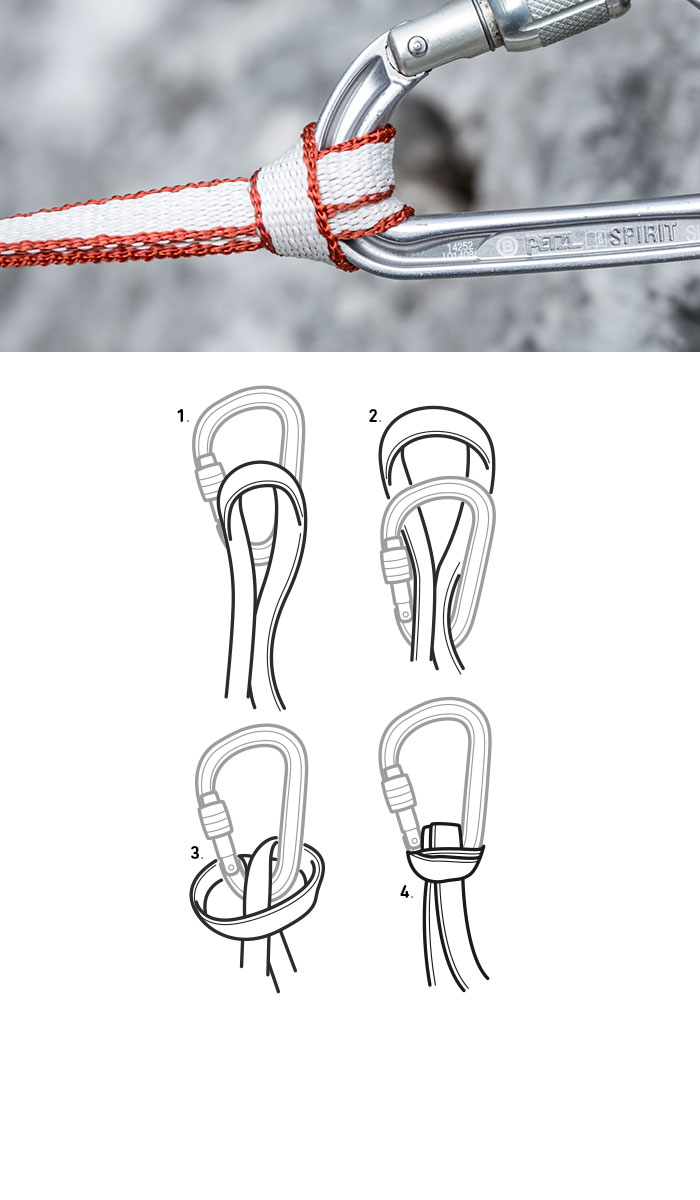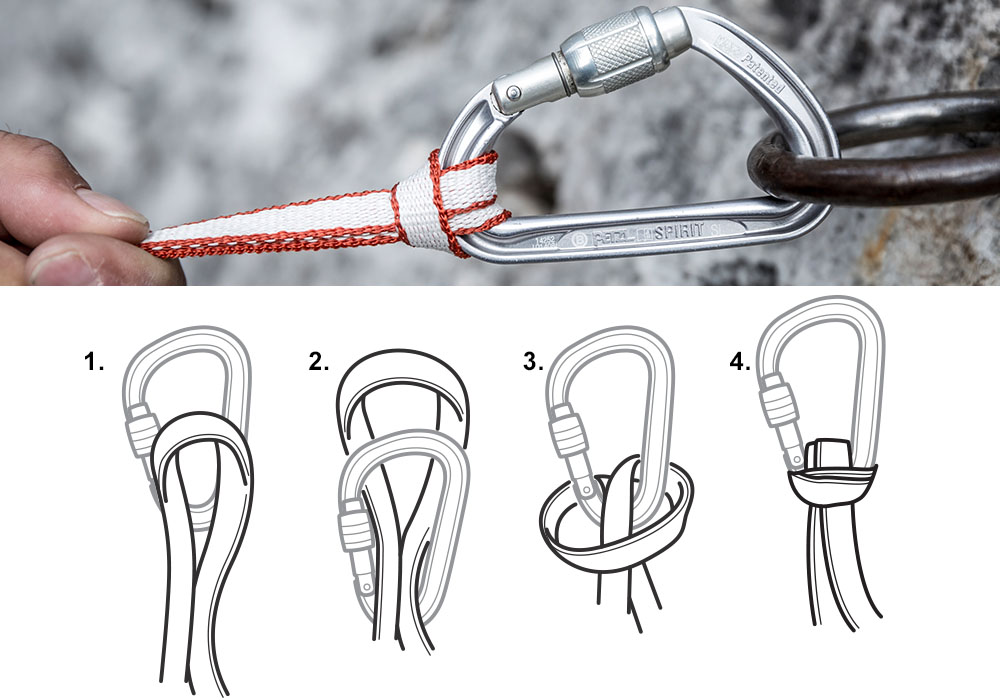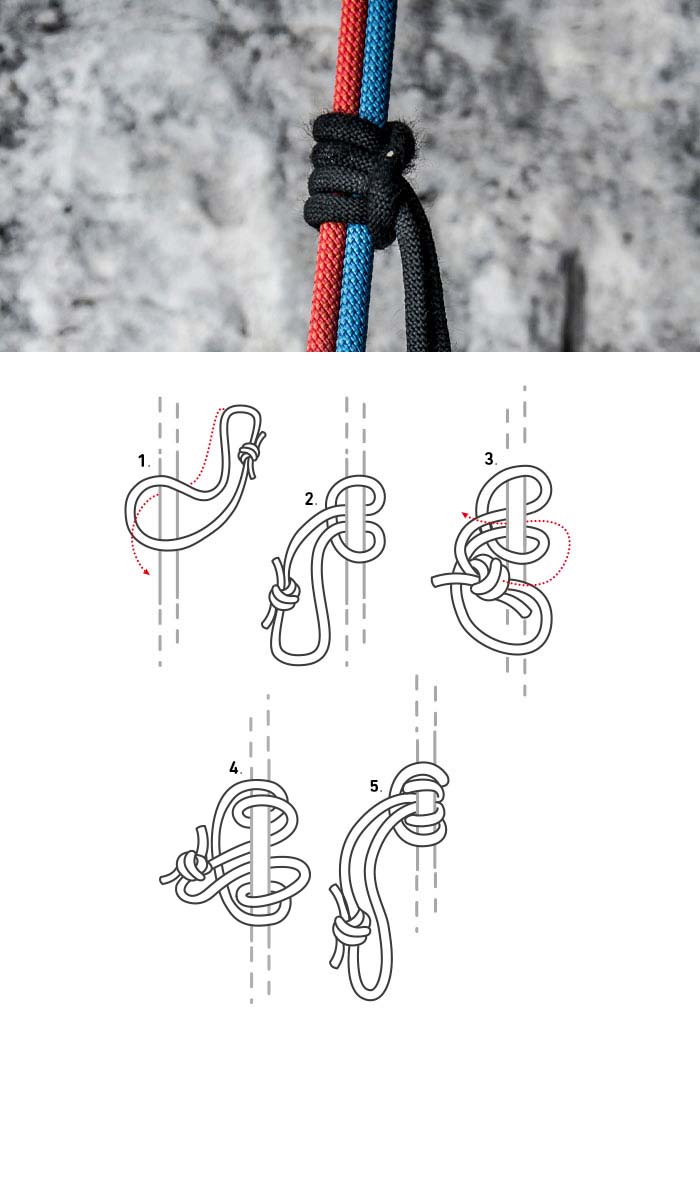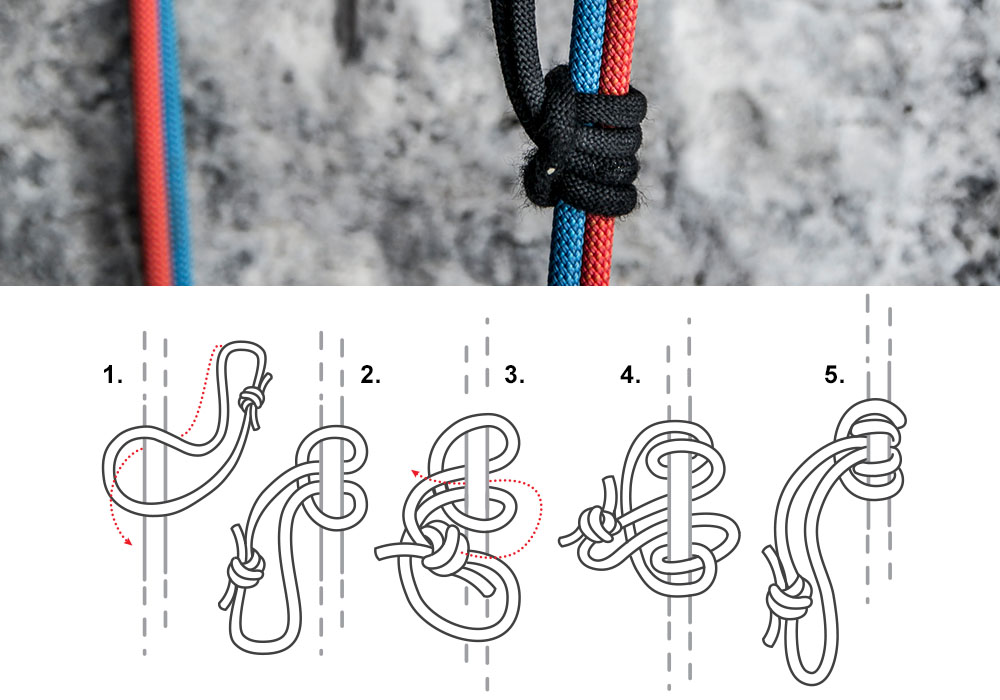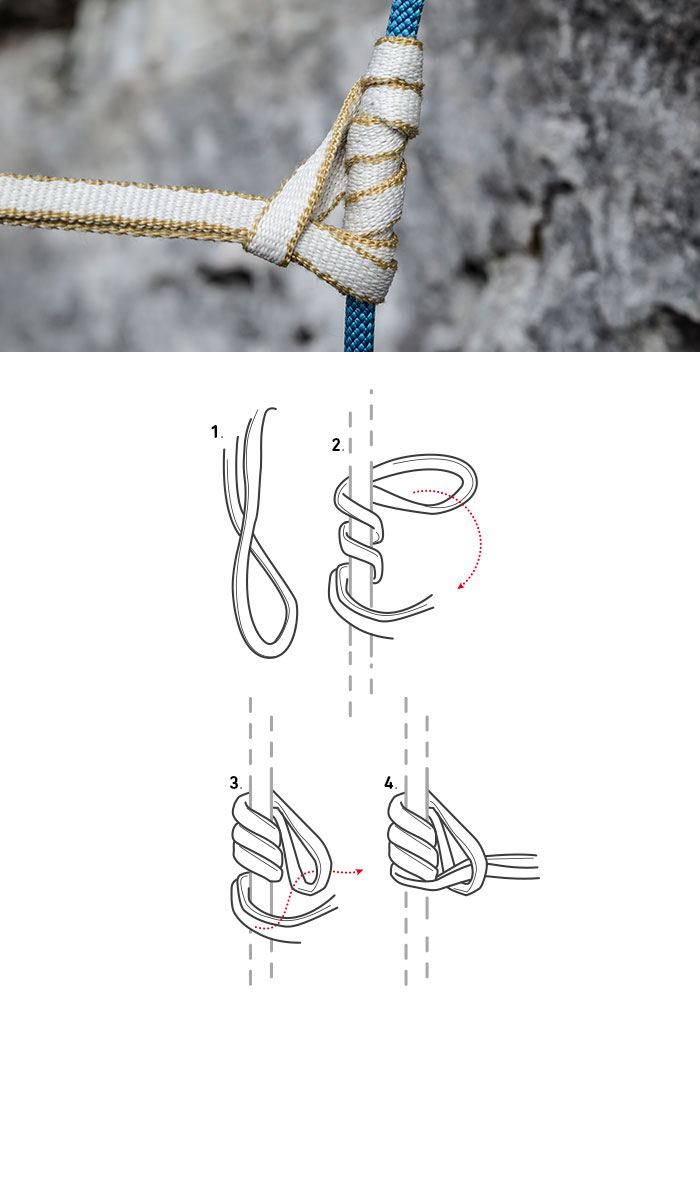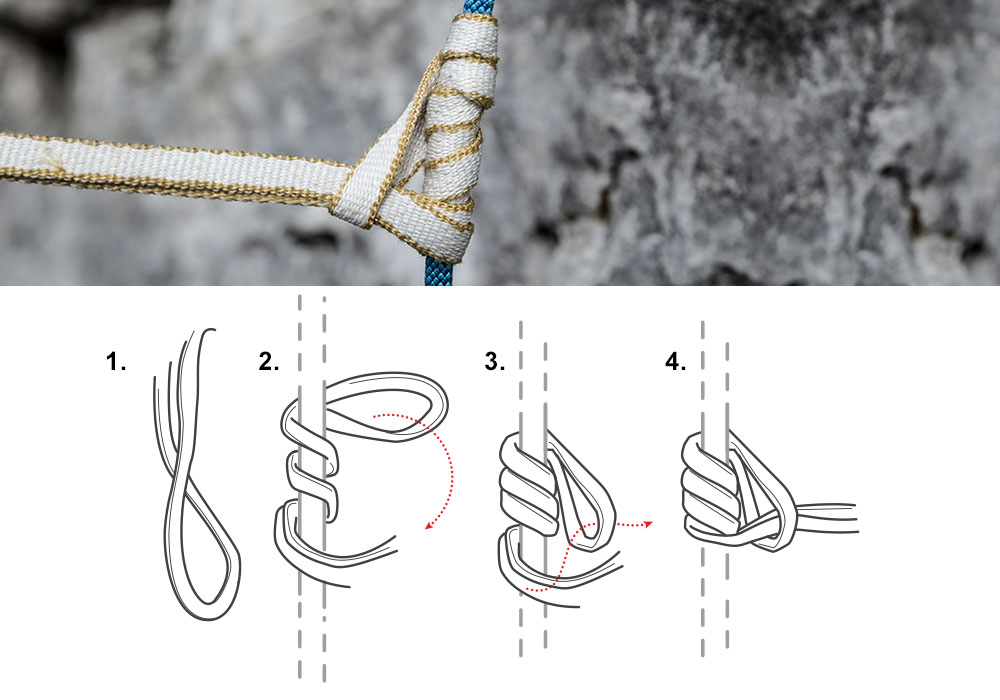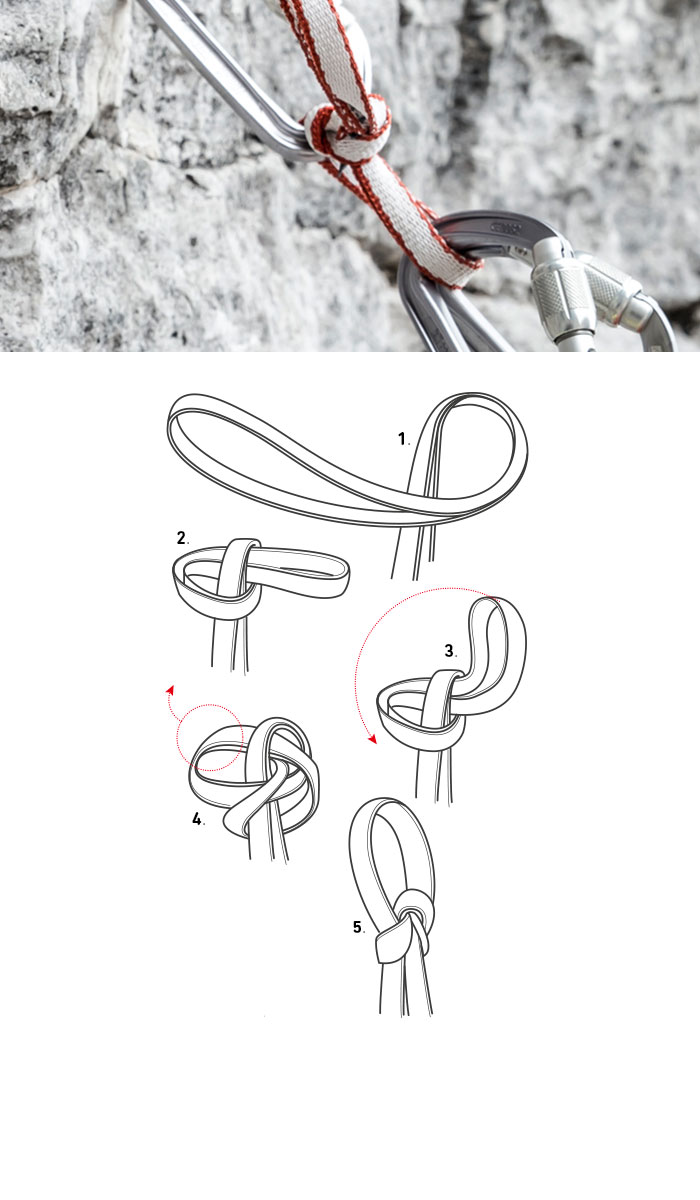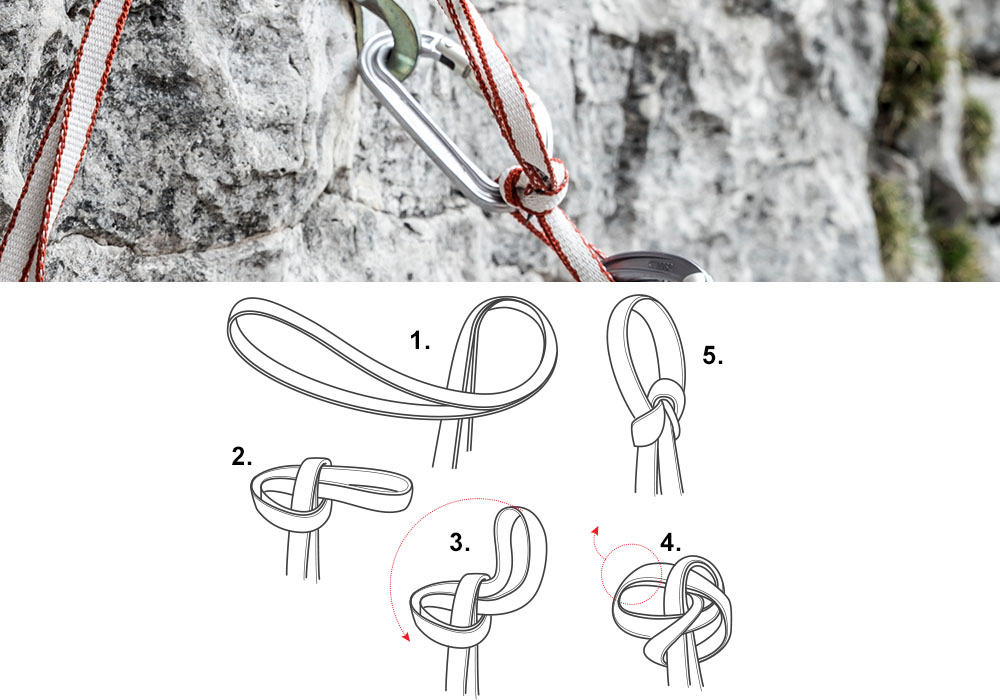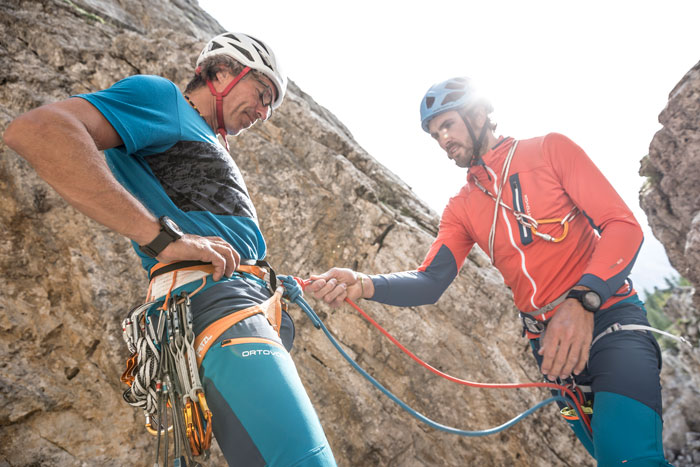Subchapter: knot techniques
Knot techniques
Climbers use various knots depending upon the situation and their area of application. Sport climbers tend to use fewer and different knots compared to alpine climbers. On alpine cliff faces, the ability to use all knots quickly and securely is vital to ensuring the rope team works properly. You must be able to do them with your eyes closed: in an emergency, in the dark, while tired or under time pressure. Uncertainty or carelessness can lead to fatal errors.
There are three different types of knot: the roping up knot, the joining knot and safety/ friction hitches.
NOTE: Every knot represents a weakening of the rope or sling material. It must therefore be tied cleanly and precisely!
MUNTER HITCH
The Munter hitch is a type of safety hitch and is technically not a real knot, but rather a brake loop. It is used for protecting the lead and follower and when lowering down the climbing partner, and works best in a pear-shaped HMS carabiner.
CLOVE HITCH
The clove hitch is a safety knot and is ideal for a personal anchor. It is attached at the anchor’s center point using a locking carabiner. The length of the clove hitch can be set precisely and adjusted quickly: You pull on the center ridge of the knot and push the rope in the desired direction. Inconvenient untying or removal of your personal anchor becomes unnecessary.
FIGURE EIGHT KNOT
The figure eight loop has been established as a standard knot for roping up and tying in. It is used for sport and alpine climbing.
NOTE: The finished knot has to be tightened and all its strands double checked for completion.
OVER HAND KNOT
The over hand knot is used as a joining knot: It is used for joining two rope ends and is recommended above all for light loads (rappelling, prusiking) or for knots that need to be applied from a climbing position (at a tunnel, or a knot loop). Although overall it offers a less secure knot, with long ends it is totally sufficient for these levels of strain.
GIRTH HITCH
On the one hand, the girth hitch is a quick and simple knot for connecting slings. On the other hand, girth hitches can also be used to fasten slings to trees and to attach a personal anchor sling to a harness and carabiner.
Beware: Joining knots such as the girth hitch are vulnerable when they are under strain and scrape on the rock face, for example when setting top-rope anchors over rock edges. Sling material can get damaged quickly!
PRUSIK KNOT
The prusik knot is a friction hitch knot that can act as an aid during ascent: It can be shifted when not under strain, but sticks in place when under strain. On alpine rock faces, the prusik knot is most often used for a safety back up while rappelling. A cord is wrapped two or three times – depending upon the rope thickness – around both strands. When rappelling the climber shifts the knot. The prusik hereby serves to protect the rappelling climber. A 5–6mm thick cord – ideally made of Kevlar or Dyneema – is normally used for prusik knots.
BOWLINE ON A BIGHT
The climber needs a central point on the anchor where the carabiners for the personal anchor and partner's belay can be clipped on. The bowline on a bight can be used as the central point. A bowline on a bight knot uses a double bight and puts little strain on the belt material. It is also very strong and does not tighten when under strain. A bowline on a bight is normally set up before the climb with a 120cm sling. While climbing, the sling, with two locking carabiners, is always on hand.
Quiz: knot techniques
Various knots are required in alpine climbing. A climber must know how knots are to be used and their areas of application to safely master alpine climbs. Now it’s your turn: Select the correct knot for each situation!
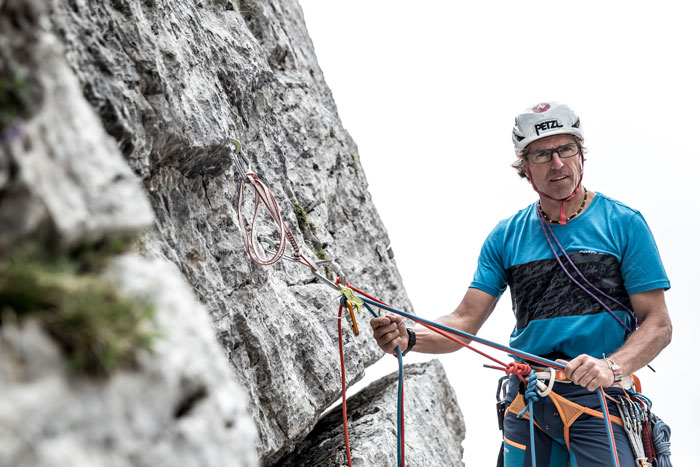

SELECT THE CORRECT KNOT
You’re the lead climber and have arrived at the belay. Here you find two solid anchors: you fix a series connection sling to the lower anchor and arrange your self-belay. Then you add the rear belay with a belay sling. Which knot do you use to self-belay?
Unfortunately, this answer is incorrect.
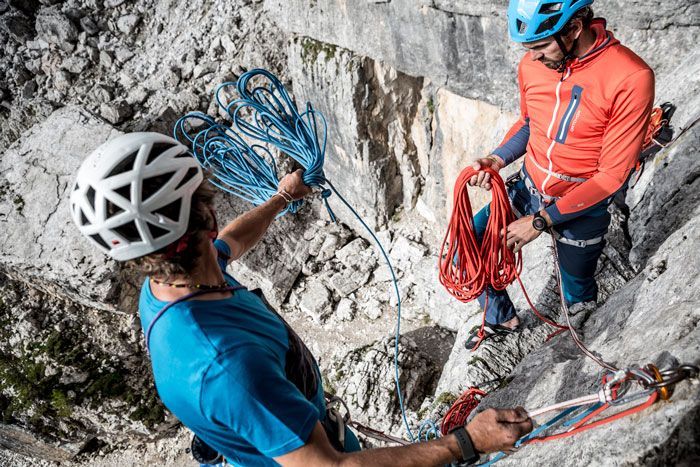

SELECT THE CORRECT KNOT
You’ve climbed the rock face pitch for pitch with your rope partner and have arrived safely at the summit. You’ve arrived at the rappelling point, threaded the half rope and joined it with an over hand knot. Now you’re getting ready for rappelling. Which knots do you use while rappelling for safety back up?
Unfortunately, the answer is incorrect.

